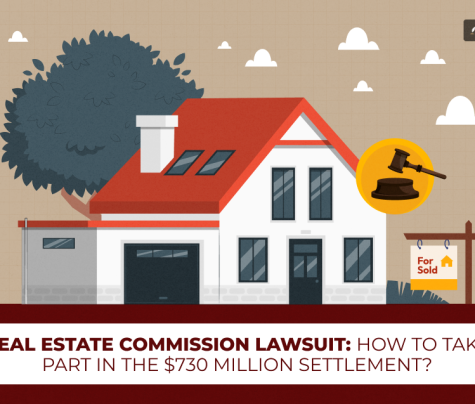
Property disputes in India are on the rise, with many families, business owners, and even neighbors finding themselves in long, drawn-out battles. These disputes often stem from inheritance, unclear property boundaries, and conflicting ownership claims.
Navigating the legal system can be daunting, and it’s no wonder people are seeking faster and more effective ways to resolve these issues. Let’s look at some quick facts that highlight the growing challenge:
- Over 70% of civil cases in Indian courts are property-related disputes, taking up substantial judicial resources and delaying justice for years.
- More than 66,000 property-related cases are pending in the Supreme Court alone, while millions more await judgment in lower courts.
- According to reports, the average property case in India can take over 15 years to resolve, costing lakhs of rupees in legal fees and associated costs.
With these statistics in mind, it’s essential to understand the available options for a smoother, faster resolution. In this article, I will cover the legal steps and alternative methods to resolve property disputes effectively, helping you find a path to peace without unnecessary delay.
What is a Property Dispute?

A property dispute is a legal disagreement over the ownership, boundaries, or use of a piece of land or property.
Such disputes can arise between individuals, families, businesses, or even government entities, and they often lead to lengthy and stressful legal battles if not resolved quickly.
In India, property disputes are particularly common, given the cultural significance of land ownership and the complexity of inheritance laws.
There are several common reasons why property disputes arise:
1. Inheritance Conflicts: Many property disputes stem from inheritance issues, especially when family members disagree over who should inherit certain assets or how they should be divided. In India, property is often passed down through generations, which can lead to complicated legal issues if wills are unclear or if there is no will at all.
2. Ownership Confusion: Sometimes, unclear or outdated records can create confusion over who truly owns a piece of property. In many cases, old documents, overlapping claims, or fraud can complicate ownership and lead to disputes.
3. Boundary Disagreements: Property boundaries aren’t always clearly defined, which can result in conflicts between neighbors. Whether it’s a fence, wall, or driveway, any unclear boundary can lead to legal disputes if neighbors cannot reach an agreement.
4. Sale and Transfer Issues: Problems can also arise during the sale or transfer of property. For example, if a seller fails to disclose a legal issue related to the property, the buyer may later face disputes over the asset’s legitimacy.
Resolving property disputes in India can be challenging, especially given the time and expense involved.
But with a better understanding of the causes and options available, it’s possible to approach these situations more confidently and seek effective, legal solutions.
Common Types of Property Disputes
Property disputes in India come in many forms, each with its unique challenges and potential legal consequences.
Understanding the type of property dispute you’re dealing with is an essential first step, as it will guide you toward the best way to resolve it.
Here are some of the most common types of property disputes in India:
1. Title Disputes:
These disputes arise when there is confusion or conflict over the rightful ownership of a property. Title disputes are common in cases where property records are outdated or unclear.
For example, if a property has been passed down through generations without clear documentation, multiple parties may claim ownership.
Title disputes can also occur if someone fraudulently claims ownership by forging documents.
2. Inheritance or Succession Disputes:
Property disputes often arise among family members over inherited property. When someone dies without a clear will or when family members contest a will, disputes can erupt over how property should be divided.
Indian inheritance laws can be complex, with different rules for Hindus, Muslims, and other communities, which can lead to prolonged legal battles within families.
3. Boundary Disputes:
Boundary disputes occur when two neighboring property owners disagree on where their properties start and end.
These disputes can be as simple as a disagreement over a fence line or as complex as conflicting property survey results.
Boundary disputes are often emotionally charged and can escalate quickly, especially if the property is in a high-value area.
4. Disputes over Easement Rights:
Easement rights refer to a person’s legal right to use another person’s land for a specific purpose, such as accessing a road, pathway, or water source.
Disputes arise when one party blocks or limits another’s access to these easement rights, leading to legal conflict.
For instance, a landowner might build a fence that blocks a neighbor’s right of way, sparking a dispute.
5. Lease and Rental Disputes:
Rental disputes between landlords and tenants are also common, especially in cases where there are disagreements over rent, eviction, or property maintenance.
In India, the Rent Control Act governs rental disputes, and they can range from issues like delayed rent payments to disagreements over property repairs or unauthorized subletting.
6. Disputes from Sale Agreements:
These arise when issues come up during the property buying and selling process.
For example, if a seller backs out of a sale after taking an advance, or if a buyer discovers hidden defects in the property, disputes can arise.
Fraudulent sales, where a property is sold to multiple buyers, are another source of such conflicts.
Who Can Help You With Property Dispute Cases?
When it comes to property disputes, having the right support can make all the difference. Property cases can be complicated, and trying to handle them alone can lead to missed details or prolonged delays.
Fortunately, several professionals and resources are available to help you resolve these disputes more effectively.
1. Property Lawyers
A property lawyer is often your best resource for handling disputes. They specialize in real estate laws and understand the nuances of property rights, inheritance issues, and documentation requirements.
A good property lawyer can help you build a strong case, represent you in court, and provide guidance on alternative dispute resolution methods, like mediation or arbitration.
Many lawyers offer a free initial consultation, so you can discuss your case and understand your options before committing.
2. Mediators
If you prefer to avoid court, a mediator can help both parties reach a mutual agreement without the need for legal proceedings. Mediators are neutral third parties trained to facilitate productive discussions.
In India, many family property disputes are resolved through mediation. You can hire a private mediator, or you can attend a Lok Adalat, a type of people’s court where a judge or legal expert helps settle disputes quickly and affordably.
3. Government Agencies
Certain government agencies, like the Revenue Department or local property registration offices, can assist with property verification, boundary surveys, and document clarification.
They are helpful resources if you need official property records, maps, or other documentation.
4. Real Estate Agents and Surveyors
Real estate agents and surveyors may not provide legal advice, but they can help with property verification, documentation, and boundary-related disputes. They often collaborate with lawyers to provide relevant information and insights.
How to Resolve Property Dispute in India?
Property disputes can be stressful and time-consuming, but there are several effective ways to resolve them legally and efficiently.
Here’s a step-by-step guide on how you can tackle property disputes in India while saving time and effort.
1. Start with Negotiation
Before taking any legal steps, try discussing the issue with the other party. Often, a calm conversation can resolve misunderstandings and avoid legal hassles.
In some cases, bringing in a neutral family member or mutual friend can help both sides communicate more openly.
If both parties are open to negotiating, you might be able to avoid the time and cost of legal proceedings altogether.
2. Collect All Relevant Documents
The next step is to gather all necessary documents related to the property. These may include the property title, sale deed, inheritance papers, tax receipts, and any other documentation that proves ownership.
In case of boundary disputes, old maps or survey reports can be crucial. Ensure these documents are accurate, up-to-date, and readily available, as they’ll play an important role in proving your claim if the matter goes to court.
3. Seek Mediation or Conciliation
If negotiation doesn’t work, consider mediation or conciliation. Mediation involves a neutral third party, often a professional mediator, who helps both sides reach a compromise. This is typically faster and less expensive than going to court.
In India, Lok Adalats (People’s Courts) are a popular form of alternative dispute resolution, where a judge or legal expert helps both parties reach a mutual agreement. The decision made in a Lok Adalat is legally binding, and this process can save you years of waiting in court.
4. File a Legal Suit if Necessary
If alternative methods don’t work, you may have to file a case in court. For property disputes in India, cases are usually filed in a civil court or a specific property tribunal, depending on the type of dispute.
Hiring a competent property lawyer is essential here, as they will help you draft a strong case and guide you through the legal proceedings. Remember that property cases can take a long time, so be prepared for a lengthy process.
5. Seek Interim Relief
If the dispute is causing immediate harm—like if someone is blocking your property or preventing access—you can seek interim relief from the court.
Interim relief is a temporary order from the court to stop certain actions until the case is resolved. This can be useful in urgent situations, as it protects your rights while the case is ongoing.
6. Consider Appealing, if Needed
If you’re not satisfied with the court’s decision, you have the option to appeal in a higher court.
The hierarchy typically goes from the district court to the high court, and finally, the Supreme Court of India.
While appealing is an option, it can be costly and time-consuming, so it’s best to weigh the pros and cons with your lawyer.
7. Be Patient and Stay Updated
Property disputes in India can take time, so patience is essential. Keep regular communication with your lawyer and stay updated on the progress of your case.
The legal process may feel slow, but by following these steps and keeping your documentation in order, you improve your chances of a favorable outcome.
Can You Resolve Property Dispute Cases in India Without Going to Court?
Yes, it’s possible to resolve property disputes in India without stepping into a courtroom. In fact, many people prefer this route as it’s often faster, less costly, and less stressful. Here are some effective methods to resolve property disputes outside of court:
1. Negotiation
Directly discussing the issue with the other party can sometimes lead to a fair and peaceful resolution.
If both sides are open to communicating, negotiation can be a simple and effective way to settle the matter.
It’s often helpful to approach these conversations with a calm mindset, aiming for a solution that benefits both parties.
2. Mediation
Mediation is one of the most popular alternatives to court for resolving property disputes. In this process, a neutral third party, known as a mediator, helps both sides reach a mutually agreeable solution.
Mediation sessions are less formal than court proceedings and allow for open discussion. The Lok Adalats in India offer a cost-effective and quick way to resolve disputes through mediation, and their decisions are legally binding.
3. Arbitration
Arbitration is similar to mediation, but the arbitrator’s decision is usually final and binding. This method is especially common in commercial property disputes.
In arbitration, both parties agree to let an arbitrator hear their case and make a decision. While it’s less flexible than mediation, it’s faster than a court case and can still save time and money.
4. Conciliation
Conciliation is another dispute resolution process where a conciliator meets with both parties separately to help them reach an agreement. The conciliator does not make a final decision but rather facilitates discussions to encourage a fair settlement.
More Resources:
- What Is A Trust Attorney? Beginners Guide
- Small Estate Affidavit – A Brief Explanation For You
- Are There 448 or 470 Articles in the Indian Constitution?










0 Reply
No comments yet.